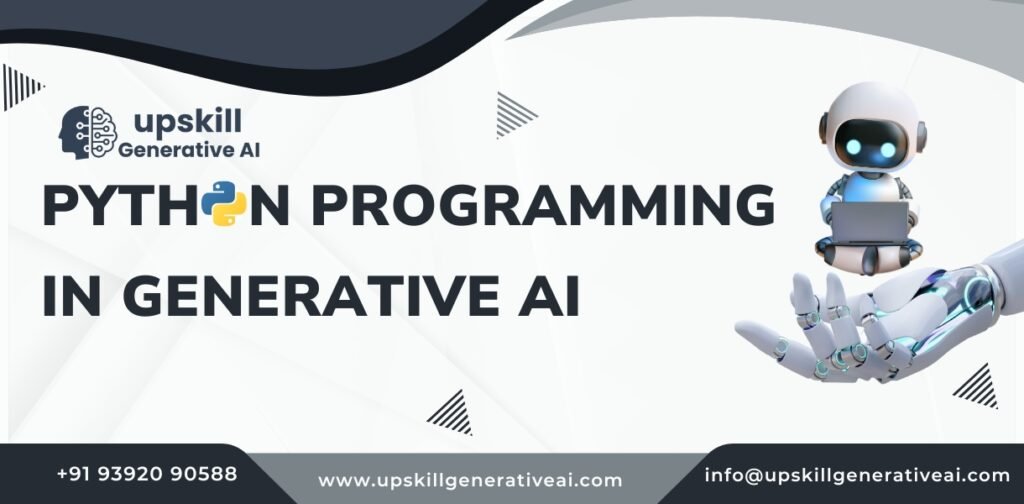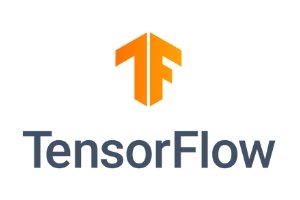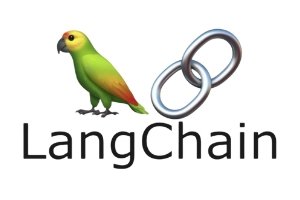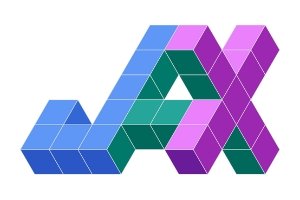Python Programming in generative ai

In the world of artificial intelligence, Python programming in Generative AI stands out as one of the most essential and powerful combinations. With its simplicity, vast library support, and active developer community, Python has become the go-to language for developing generative AI applications. Whether it’s generating realistic images, writing human-like text, or composing music, Python enables it all.
The rise of Generative AI—AI that creates content—has transformed industries like marketing, design, media, education, and even software development. Behind many of these breakthroughs is Python programming in Generative AI, thanks to its flexible syntax, scalability, and vast machine learning libraries.
Python simplifies the implementation of advanced deep learning models like GANs (Generative Adversarial Networks), VAEs (Variational Autoencoders), and Transformers (used in models like GPT). With these tools, developers can train models to create high-quality content across different domains.
Key Python Libraries Empowering Generative AI
One of the main reasons Python programming in Generative AI is so popular is its powerful ecosystem of libraries. Here’s a breakdown:
- TensorFlow and Keras: Ideal for building and training deep neural networks.
- PyTorch: Widely used for academic research and industry applications, especially in NLP and computer vision.
- Transformers (by Hugging Face): Offers pre-trained models like GPT-2, GPT-3, and BERT for text generation.
- NumPy & Pandas: commonly used tools to clean, organize, and prepare data before analysis.
- OpenCV & PIL: Useful in image processing tasks.
- LangChain: Helps integrate large language models into applications.
Each of these libraries contributes to the success of Python programming in Generative AI, enabling developers to design, train, and deploy generative models efficiently.
Applications of Python in Generative AI
1. Text Generatio
Python is widely used in Natural Language Processing (NLP) because of its strong performance and flexibility. Using Python, developers can build models like GPT and BERT that write poetry, answer questions, or create personalized emails. The growth of Python programming in Generative AI is most visible in the rise of content-creation tools powered by language models.
2. Image Generation
Generative Adversarial Networks (GANs) and VAEs, built using Python, allow machines to generate images that are indistinguishable from real ones. They’re used in areas like fashion design, video games, and medical imaging. Python provides the tools to handle datasets, build networks, and visualize outputs easily.
3. Music and Audio Synthesis
Python’s growing use in audio synthesis is another example of the capabilities of Python programming in Generative AI. Libraries like Magenta (built on TensorFlow) can create music and convert simple notes into full-fledged compositions.
4. Code Generation
With the help of language models trained using Python, machines can now generate code snippets or complete functions. GitHub Copilot, for instance, is powered by a Python-based model and accelerates coding productivity.
5. Video Generation and Animation
Python is also finding its way into generative video tools, where AI can animate characters or create new video content from scratch.When paired with deep learning, Python makes it simple to quickly build and test new AI ideas.
Python’s Role in the Generative AI Workflow
Every stage of the Generative AI development process benefits from Python programming in Generative AI:
Data Handling: Python makes it easy to collect, clean, transform, and enhance data, helping streamline the entire data preparation process.
Model Design: Frameworks like Keras and PyTorch allow developers to build custom architectures.
Training: Python supports training models on large datasets, whether on GPUs or cloud platforms.
Evaluation: Evaluation metrics, visualization tools, and fine-tuning processes are Python-friendly.
Deployment: Python enables integration into web applications, mobile apps, or APIs.
Prompt Engineering: Python can structure and test prompts for better interaction with large language models.
Integration & APIs: With tools like FastAPI and Flask, Python allows developers to easily turn AI models into real-world applications or web services that others can use.
Learning Python Programming for Generative AI
Given its importance, learning Python programming for Generative AI is a smart step for anyone who wants to start a career in artificial intelligence. Python is the foundation for building, training, and deploying generative models like GANs, VAEs, and transformers. Whether you’re a beginner or already have some coding experience, there are many great ways to get started.
Online Courses
To master Python programming in Generative AI, online platforms offer structured and flexible learning paths.
UpskillGenerativeAI.com offers beginner-friendly to advanced resources tailored to Python in Generative AI, with regular updates and hands-on content.
DeepLearning.AI provides a specialization focused on Generative AI using Python, covering real-world applications.
Coursera includes in-depth courses on TensorFlow, Natural Language Processing (NLP), and Generative Adversarial Networks (GANs) using Python.
Books
Books are a great way to build a solid foundation in Python programming in Generative AI:
- Deep Learning with Python by François Chollet
- A practical guide titled Hands-On Generative Adversarial Networks with Keras by Rafael Valle walks you through building real-world GAN models using Python and Keras.
Tutorials
- Hands-on tutorials accelerate practical learning.
- Hugging Face and TensorFlow official sites offer step-by-step tutorials to help you build models with Python.
- YouTube channels like Sentdex and CodeEmporium simplify complex Generative AI projects using Python.
Mastering Python programming in Generative AI not only prepares you for research and AI development roles but also opens doors to freelancing, content creation, and product building in the AI space. With the right resources — like those offered on upskillgenerativeai.com — you can fast-track your journey into the future of artificial intelligence.
Advantages of Using Python in Generative AI
- Ease of Use: Readable syntax and beginner-friendly.
- Community Support: Massive global developer community.
- Wide Adoption in Industry: From Google to OpenAI, most AI labs use Python.
- Cross-Platform:It runs smoothly on Windows, Mac, and Linux without any hassle.
- Open Source: Free and well-documented libraries.
That’s why most AI professionals prefer using Python for working with Generative AI.
Why Python is the Backbone of Generative AI
Artificial Intelligence (AI) is evolving at a remarkable pace, and Generative AI is one of its most groundbreaking advancements. From creating images and music to generating human-like text, generative models are transforming how we interact with machines. But behind this revolution lies a powerful and flexible programming language that makes it all possible—Python.
We explore in detail why Python is the backbone of Generative AI, analyzing its strengths, ecosystem, and practical applications. Whether you’re a beginner or an experienced developer, understanding Python’s role in Generative AI will give you an edge in this fast-growing field.
Why Python is the Backbone of Generative AI: A Developer's Perspective
Ask any AI engineer or machine learning enthusiast, and they’ll tell you—Python is the gold standard.So, what makes Python such a great fit for Generative AI? It boils down to five key advantages: simplicity, libraries, community, versatility, and scalability.
Let’s dive deeper to understand why Python is the backbone of Generative AI, especially in real-world development environments.
1. Simplicity and Readability
One of the main reasons why Python is the backbone of Generative AI is its simplicity. Python is easy to read and write, so developers can spend more time solving AI problems instead of getting stuck on complicated programming rules.
- Python code looks almost like plain English.
- Beginners can quickly grasp fundamental concepts.
- Developers can prototype and test models faster.
In the fast-paced world of Generative AI, where experiments and rapid iterations are key, Python’s ease of use allows teams to build and refine models without unnecessary overhead.
2. Rich Ecosystem of Libraries and Frameworks
One big reason Python is at the heart of Generative AI is because it offers a wide range of powerful libraries built specifically for AI tasks.
Python provides tools for every stage of AI development:
- TensorFlow and PyTorch – the most popular deep learning frameworks used by professionals and researchers to build advanced AI models
- Keras – a user friendly tool that lets you build and test neural networks quickly, making it perfect for fast experimentation..
- Scikit – learn For classical machine learning models and preprocessing.
- NumPy & Pandas – commonly used tools to clean, organize, and prepare data before analysis
- Matplotlib & Seaborn –To help understand and explore the data visually
In the context of Generative AI:
- PyTorch is a popular choice for building and training Generative Adversarial Networks (GANs) because of its flexibility and ease of use.
- Hugging Face Transformers make it easy to generate text using powerful models like GPT, BERT, and T5.
- This expansive toolkit is a big reason why Python is the backbone of Generative AI, giving developers an “AI lab” at their fingertips.
- Strong Community and Educational Resources
You can’t underestimate the value of community support when working with cutting-edge technologies. One of the hidden strengths why Python is the backbone of Generative AI is its vibrant global developer base.
- Millions of developers around the world actively contribute to Python’s open-source AI libraries
- There’s extensive documentation and real-world examples.
- Platforms like Stack Overflow, GitHub, and Reddit offer quick help and project inspiration.
In addition, learning resources are everywhere:
- MOOCs (Coursera, edX, Udemy)
- the book Deep Learning with Python
- Tutorials on YouTube and Medium
- Free online courses by DeepLearning.AI and Fast.ai
This collective knowledge accelerates learning and experimentation, making it even clearer why Python is the backbone of Generative AI for learners and professionals alike.
4. Versatility Across Generative AI Applications
Python’s versatility is unmatched. From image creation to natural language processing, Python handles diverse AI tasks with ease.
Let’s look at just a few applications where Python proves it’s the backbone of Generative AI:
Text Generation:
- GPT models (e.g., GPT-3) use Transformer architecture written in Python.
- Use cases: Chatbots, content writing, translation, email generation.
Image Generation:
- GANs and VAEs for generating synthetic images.
- Use cases: Fashion, medical imaging, animation.
Audio and Music Synthesis:
- Libraries like Magenta (by Google) use Python to generate melodies.
- Use cases: AI-generated compositions, voice cloning.
Code Generation:
- Python powers Copilot and other code-generation tools.
- Use cases: Auto-complete, programming help.
Python’s flexibility is a big reason why it’s the go-to language for building Generative AI.
- Seamless Integration with Cloud and Big Data Platforms
Modern AI development often requires handling massive datasets and deploying models on cloud platforms. Python excels in both.
Big Data Compatibility:
- Python easily connects with big data tools like Hadoop, Apache Spark, and Dask, making it great for handling large-scale data.
- Easily handles large-scale data pipelines and preprocessing tasks.
Cloud Integration:
- Python SDKs are available for AWS (Boto3), Google Cloud, Azure, and IBM Watson.
- Frameworks like FastAPI and Flask allow deploying Python-based AI models as scalable REST APIs.
Whether you’re building a small prototype or deploying enterprise-grade AI, this flexibility further proves why Python is the backbone of Generative AI.
Real-World Companies Using Python in Generative AI
Here are some major organizations leveraging Python for their generative AI efforts:
- OpenAI: Uses Python extensively for GPT and Codex.
- Google DeepMind: Built AlphaGo, AlphaFold, and more using Python.
- Adobe: Uses Python models for AI-powered design tools.
- Meta AI (Facebook): Builds powerful generative models using PyTorch for large-scale applications..
Python’s use across so many industries proves why it’s the foundation of Generative AI.
Learning Python for Generative AI: Where to
If you’re looking to break into this field, start with Python and gradually move into AI-specific tools.
Step-by-step Roadmap:
1.Basic Python Programming:
Data types, loops, functions, classes
2.Data Science Libraries:
NumPy, Pandas, Matplotlib
3.Machine Learning Foundations:
Scikit-learn, classification, regression
4.Deep Learning:
Keras, TensorFlow, PyTorch
5.Generative Models:
GANs, VAEs, Transformers
6.Deployment & APIs:
FastAPI, Docker, Flask, Streamlit
Learning along this roadmap will help you understand why Python is the backbone of Generative AI from both a theoretical and practical standpoint.
Essential Python Concepts for Beginners in AI
Artificial Intelligence (AI) is no longer the future—it’s the present. AI is all around us — from voice assistants and chatbots to recommendation engines and even self-driving cars. And if you’re planning to step into this exciting field, one language stands out as your best starting point: Python.
We’ll walk you through the Essential Python Concepts for Beginners in AI, highlighting the foundational knowledge you need to confidently begin your AI learning journey. Whether you’re a student, developer, or tech enthusiast, mastering these concepts will set you up for success in artificial intelligence.
Why Python is the Right Choice for AI
Python has become the preferred language for AI and machine learning because of its simplicity, flexibility, and robust ecosystem of libraries. Its readable syntax makes it accessible for beginners, while its powerful frameworks—like TensorFlow, PyTorch, and Scikit-learn—make it a powerhouse for AI development.
That’s why understanding the Essential Python Concepts for Beginners in AI is a crucial first step. These foundational skills will not only help you write clean and efficient code but also enable you to explore advanced AI models with confidence.
- Understanding Python Basics: Syntax and Data Types
Every journey begins with the basics, and Python is no different. One of the first Essential Python Concepts for Beginners in AI is understanding how Python syntax works and how to work with data.
Key Areas to Master:
- Variables and Assignments – How to store and manipulate values
- Data Types –Whole numbers, decimal numbers, text, and true/false values
- Basic Operators – Arithmetic, logical, and comparison operations
- Input and Output – Letting users enter data and then displaying the results in a simple way
This foundational knowledge is crucial as it underpins every line of code you’ll write in your AI projects.
- Control Flow: Building Logic in Your Code
Control flow refers to how your program makes decisions and repeats tasks—something that is essential when developing intelligent systems.
As one of the Essential Python Concepts for Beginners in AI, you should become familiar with:
- Conditional Statements (if, elif, else): Used to make decisions based on different conditions.
- Loops (for, while): Help in iterating through data, which is key in AI model training and evaluation.
These structures form the logic of your AI algorithms and are used everywhere from data preprocessing to model iteration.
- Mastering Data Structures in Python
AI is all about working with data—big data, structured data, unstructured data. Python provides several built-in data structures that are essential for managing this data effectively.
Essential Structures to Know:
- Lists – Used to store ordered sequences
- Dictionaries – Perfect for storing key-value pairs (like label mappings)
- Tuples – Useful when you want an unchangeable collection
- Sets – Great for removing duplicates and fast lookups
These are among the most Essential Python Concepts for Beginners in AI, as handling and organizing data efficiently is a key part of any AI system.
- Functions: Writing Clean and Reusable Code
As your projects grow, your code should remain organized. Functions allow you to create blocks of code that can be reused, which improves readability and reduces duplication.
Why It Matters:
- Functions make it easier to handle complex tasks by breaking them into smaller, manageable pieces.
- They enable better testing and debugging.
- They support modular programming, which is vital in AI pipeline development.
Learning how to create and use functions is definitely one of the Essential Python Concepts for Beginners in AI that will serve you throughout your AI journey.
- Python Libraries: Powering Your AI Projects
One of Python’s biggest strengths lies in its extensive set of libraries. These tools simplify everything from data analysis to neural network creation and are considered core to the Essential Python Concepts for Beginners in AI.
Popular Libraries to Start With:
- NumPy – For handling arrays and performing mathematical operations
- Pandas – For reading, cleaning, and analyzing data sets
- Matplotlib & Seaborn – For data visualization and graphical insights
These libraries allow you to implement powerful AI algorithms without starting from scratch. Knowing how to use them is critical to becoming effective in AI development.
- Object-Oriented Programming (OOP) for AI Beginners
Once you move beyond the basics, understanding Object-Oriented Programming is the next step. It helps structure larger programs and improves scalability—especially in AI projects that require managing models, datasets, and evaluation systems.
OOP Concepts to Learn:
- Classes and Objects – For organizing code into templates and instances
- Inheritance and Polymorphism – For reuse code and make your programs more flexible and easier to manage.ty
- Encapsulation – For protecting data inside classes
OOP is more than just an advanced topic—it’s one of the Essential Python Concepts for Beginners in AI who want to transition from basic scripts to real-world applications.
- File Handling: Reading and Writing Data Efficiently
Most AI projects use data stored in formats like CSV, text, or JSON files. So, knowing how to read and write these files is a basic but important skill.
This includes:
- Importing datasets for training models
- Logging results and outputs
- Saving models and predictions for future use
Mastering file handling is another one of the Essential Python Concepts for Beginners in AI, especially when working on live projects and dealing with real-time data pipelines.
- Preparing for AI Development: Going Beyond Syntax
Once you’re comfortable with basic Python, it’s time to explore how it ties directly into AI development. Some concepts you’ll encounter early include:
Data Preprocessing – Cleaning and transforming raw data into usable input
Model Evaluation – Learning how to measure model performance using metrics like accuracy, precision, and recall
Gradient Descent – An important method used to teach AI models how to learn
Hyperparameter Tuning – Adjusting settings to improve performance
These areas build directly upon the Essential Python Concepts for Beginners in AI, helping bridge the gap between programming and AI expertise.
Python Libraries Used in Generative AI Projects
Generative AI has taken the world by storm—redefining how machines create text, images, music, code, and more. Python is at the center of this change and is the most popular language for creating strong AI models. What makes Python so effective for this? The answer lies in its ecosystem of high-performance libraries tailored for AI.
We’ll explore the most essential Python Libraries Used in Generative AI Projects. Whether you’re a beginner exploring AI or a developer building next-gen generative applications, this guide will provide deep insights into the tools that power AI creativity
What Are Python Libraries?
A Python library is a set of ready-made tools that helps developers save time by reusing code instead of writing everything from scratch. These libraries simplify complex tasks like data manipulation, model training, and visualization—making AI development faster and more efficient.In the context of generative AI, libraries enable tasks such as image creation, text generation, and model training with just a few lines of code.
Why Python Libraries Matter in Generative AI
Python is not just a coding language — it’s what most AI tools are built on. The Python Libraries Used in Generative AI Projects are essential because they:
- Save Time: Developers use pre-built functions instead of coding algorithms from the ground up.
- Enable Innovation: Advanced libraries support neural networks, diffusion models, and generative transformers.
- Promote Community Support: Open-source contributions ensure constant updates, support, and improvements.
- Allow Seamless Integration: Most Python libraries integrate well with cloud platforms, GPUs, and APIs, accelerating development and deployment.
Common Python Libraries People Use in Generative AI Projects
Let’s now explore the most commonly used and powerful Python Libraries Used in Generative AI Projects across various domains like text, image, and audio generation.
1. TensorFlow

TensorFlow, made by Google, is one of the most popular tools used for deep learning. It is built to handle complex numerical computations and offers full flexibility for building and training neural networks, including generative models like GANs (Generative Adversarial Networks) and VAEs (Variational Autoencoders).
Why TensorFlow?
- TensorFlow Lite for mobile AI
- TensorFlow Hub with pre-trained models
- Keras for high-level model building
- Compatibility with cloud platforms
TensorFlow remains a top choice among developers due to its scalability, rich documentation, and cross-platform support.
2. PyTorch

Backed by Meta (Facebook), PyTorch is another top-tier deep learning framework and one of the most used Python Libraries Used in Generative AI Projects.Because it’s flexible and easy to use, it’s a favorite choice for researchers and quick prototyping.
Key Features:
- TorchVision & TorchAudio for multimedia AI
- CUDA acceleration for GPU-based training
- PyTorch Lightning for rapid prototyping
- Hugging Face integration for NLP
PyTorch helps developers build advanced generative models like diffusion models, autoregressive models, and transformers.
3. Transformers

Transformers revolutionized natural language processing, and Hugging Face made them accessible. This library lets you use thousands of ready-made models that can write text, make images, and create sounds.
What Makes It Stand Out:
- Can be used with popular AI models like GPT, BERT, and T5
- Unified API for TensorFlow and PyTorch
- Multi-modal capabilities (text-to-image, speech-to-text)
- Easy fine-tuning on custom datasets
Transformers are a game-changer in text generation, enabling developers to build chatbots, content generators, and automated translators with minimal effort.
4. Diffusers

5. LangChain
Diffusion models have become incredibly popular in generative image creation, and Hugging Face’s Diffusers library offers a comprehensive toolkit for working with these models.
Top Features:
- Pre-trained models like Stable Diffusion and Imagen
- Text-to-image generation using prompt engineering
- Video and audio generation capabilities
- Works with multiple backends (PyTorch, TensorFlow)
Among the modern Python Libraries Used in Generative AI Projects, Diffusers are leading the evolution of visual creativity with AI.

LangChain helps connect smart AI models like GPT-4 with other tools, websites, and apps to make them more useful. It enables developers to build complex workflows by chaining LLMs with memory, search engines, or cloud services.
Why It’s Essential:
- Integrates with OpenAI, Anthropic, Cohere, and others
- Enables Retrieval-Augmented Generation (RAG)
- Builds dynamic chatbots and multi-step agents
- Works seamlessly with vector databases
LangChain has quickly become one of the most versatile Python Libraries Used in Generative AI Projects for creating context-aware AI systems.
6. JAX

JAX, made by Google, is a powerful tool for fast math calculations. It works like NumPy but is faster and can use GPUs or TPUs to speed things up automatically.
Ideal For:
- Training GANs and diffusion models
- Scientific and mathematical computing
- Just-in-Time compilation for speed
- Parallel execution across devices
JAX is a rising star among performance-focused Python Libraries Used in Generative AI Projects.
7. LlamaIndex

LlamaIndex helps connect AI models with real-world data by indexing and retrieving unstructured information. It’s often used alongside LangChain to power RAG pipelines.
Use Cases:
- Ingesting private or external datasets
- Generating context-rich responses
- PDF, CSV, and web scraping integration
- Advanced vector search capabilities
This library helps AI create better and more meaningful results.
8. Weights & Biases

While not a model-building library, Weights & Biases (W&B) is crucial for experiment tracking, visualization, and model optimization.
W&B Offers:
- Real-time dashboard for metrics
- Hyperparameter tuning (Sweeps)
- Dataset and model versioning
- Team collaboration tools
W&B ensures better model management, making it one of the supporting Python Libraries Used in Generative AI Projects that scale.
Data Handling and Visualization Libraries
Data preparation and visualization are core aspects of any generative AI workflow. These supporting libraries play a vital role:
- NumPy – Core for numerical computations
- Pandas – For data wrangling and manipulation
- Matplotlib & Seaborn – For performance plotting and visualizing generated outputs
- Scikit learn – For preprocessing, evaluation, and traditional ML
Together, these libraries help developers prepare clean datasets, understand model behavior, and visualize results—all essential components of successful AI projects.
The Future of Generative AI with Python
The world of technology is evolving rapidly, and The Future of Generative AI with Python is one of the most transformative developments we are witnessing today. Generative AI is no longer just about creating text or art—it is driving innovation across industries like healthcare, finance, design, and education. And at the center of this revolution is Python, a powerful programming language that continues to empower developers and researchers to build advanced AI systems.
Python is considered the backbone of AI development because it’s easy to learn, highly flexible, and comes with powerful libraries like TensorFlow, PyTorch, and Hugging Face that make building AI models faster and more efficient.. As generative AI models become more powerful and complex, Python remains the most accessible and versatile language to develop, deploy, and scale these intelligent solutions.
Why Python Plays a Big Role in the Future of Generative AI
Before diving into future trends, it’s essential to understand why Python plays such a crucial role in shaping The Future of Generative AI with Python. Python’s syntax is easy to read, which allows even beginners to understand and contribute to complex AI projects. Additionally, Python supports major libraries and frameworks such as:
- TensorFlow for building deep learning models
- PyTorch for dynamic and flexible AI research
- Hugging Face uses Transformers to power NLP-based generative models.
- Diffusers for AI image and video generation
- LangChain for chaining LLMs into production workflows
These tools, combined with Python’s ability to integrate easily with cloud platforms and big data systems, create the perfect foundation for future AI innovations.
Enhanced Multimodality and Integration
A significant aspect of The Future of Generative AI with Python is its ability to generate and process multimodal content. We’re moving beyond text and image generation into a realm where AI systems can simultaneously process and synthesize video, code, voice, and more.
This trend of multimodality allows for more intuitive user interactions. For instance, an AI system built with Python could process a spoken command, generate a written document, and create a relevant image—all in one seamless process.
Python libraries such as OpenAI’s API, PyTorch, and TensorFlow are being used to create these intelligent systems that can handle diverse data inputs and outputs.
Greater Autonomy in AI Systems
One of the most exciting developments in The Future of Generative AI with Python is the creation of autonomous AI agents. These systems will soon be capable of independently analyzing data, planning tasks, and executing decisions—without constant human input.
Imagine an AI that doesn’t just write code—it also takes care of deploying, testing, and improving it all on its own. With frameworks like LangChain and agents like AutoGPT and BabyAGI, all written in Python, the groundwork for such autonomy is already being laid.
These Python-based AI agents could revolutionize everything from marketing automation to scientific research, saving time and resources while maintaining high accuracy.
Explainability and Responsible AI
As generative AI becomes more integrated into critical decision-making processes, understanding how it works becomes equally important. That’s why The Future of Generative AI with Python emphasizes explainability, transparency, and ethical practices.
Python is leading the way with libraries like SHAP (SHapley Additive exPlanations) and LIME (Local Interpretable Model-agnostic Explanations), which help developers understand and communicate how AI models make decisions.
Explainable AI is super important in areas like healthcare and finance, where decisions can seriously impact people’s lives and building trust really matters.. By developing ethical and interpretable models using Python, developers can ensure that AI is fair, unbiased, and aligned with human values.
Hyper-Personalization of Content and Services
A big part of the future of Generative AI with Python is creating highly personalized experiences for each user. AI models powered by Python are increasingly able to deliver unique, real-time experiences to individual users based on their preferences, behavior, and context.
From personalized learning paths in education to dynamic product recommendations in e-commerce, Python enables the creation of adaptive and responsive AI applications.
Libraries like Scikit-learn, Transformers, and Streamlit are used to build Python applications that tailor outputs to each user’s needs—improving engagement, satisfaction, and retention.
Widespread Accessibility of AI Tools
One of the most promising directions for The Future of Generative AI with Python is the democratization of AI. In the coming years, expect to see AI tools becoming more accessible, thanks to low-code and no-code platforms powered by Python.
Whether you’re a student, entrepreneur, or small business owner, Python-based platforms like Gradio, Hugging Face Spaces, and Colab notebooks allow you to experiment with generative AI models without needing deep technical knowledge.
By simplifying the AI development process, Python is empowering a broader community of creators to innovate and build powerful generative applications.
Use Cases Expanding Beyond Content Creation
The Future of Generative AI with Python is not limited to creative outputs like art and text.It’s now growing into important areas like:
- Drug discovery: Python libraries like DeepChem are enabling faster molecule generation and simulation.
- Automated software development: GitHub Copilot, built using transformer models in Python, is redefining how developers write code.
- Real-time data analysis: Python frameworks are helping businesses make sense of big data through AI-generated summaries, dashboards, and decisions.
As Python continues to evolve, its application in generative AI will reshape industries and streamline operations.
Python’s Growing Ecosystem: Tools and Libraries
To fully grasp The Future of Generative AI with Python, it’s essential to understand the evolving ecosystem of tools supporting AI development. Here are some key Python libraries leading this change:
- TensorFlow & PyTorch: Core deep learning frameworks
- Transformers & Diffusers: NLP and visual content generation
- LangChain & LlamaIndex: Connecting LLMs to real-time data sources
- Gradio & Streamlit: Making AI easy to use through simple and intuitive interfaces
- Weights & Biases: Keeping track of experiments and checking how models perform over time
This expanding ecosystem means that developers can find a Python tool for almost every AI task, from research to deployment.
Ethical AI and Human - Cantered Design
A vital aspect of The Future of Generative AI with Python is ensuring responsible and ethical development. Python provides strong support for designing systems that adhere to ethical guidelines, fairness, and transparency.
As governments and organizations create frameworks for ethical AI usage, developers using Python are building in privacy controls, bias mitigation, and responsible deployment strategies from the ground up.
Whether it’s facial recognition, hiring algorithms, or AI in education, Python will help ensure that generative models are built with humanity in mind.
Advancing Your Python Skills for AI
AI is changing the game in every field—whether it’s healthcare, finance, education, or even entertainment. But to become a successful AI developer, it’s not enough to know only the basics of Python. You need a solid plan to move beyond beginner-level programming and master the tools, libraries, and techniques that power modern AI systems. That’s where this blog comes in. We’ll walk you through the advancing your Python skills for AI and help you develop the practical and theoretical knowledge needed to build real-world AI solutions.
Whether you’re an aspiring AI developer, data scientist, or tech enthusiast, this guide outlines a complete roadmap to make the transition from beginner to advanced AI programmer using Python.
Why Focus on Python for AI?
Before we explore the advancing your Python skills for AI, let’s understand why Python remains the top language in the AI world.
- Simplicity & Readability: Python’s clean syntax makes it easier to write and debug code.
- Robust Libraries: Libraries like TensorFlow, PyTorch, Scikit-learn, NumPy, and Pandas power almost every major AI application.
- Large Community Support: Extensive resources and forums ensure that help is always available.
- Cross-Platform Compatibility: Python works across Windows, macOS, and Linux.
With that in mind, let’s now dive into the real action plan.
1. Strengthen Your Core Programming Foundations
The first advancing your Python skills for AI is to make sure your programming basics are rock solid. Here’s what you should master:
Key Areas to Focus:
- Variables and Data Types: Understand how to manipulate different data types (int, float, str, bool).
- Control Flow: Learn how to use if, else, elif, for, and while loops effectively.
- Functions and Modules: Create reusable code blocks and learn to import Python modules.
- Object-Oriented Programming (OOP): Learn classes, objects, inheritance, polymorphism, and encapsulation.
- Error Handling: Use try-except blocks to manage exceptions efficiently.
Understanding these areas is essential before stepping into AI development. A strong grasp of core Python concepts ensures you can handle complex AI algorithms and frameworks with ease.
2. Explore AI-Centric Python Libraries and Tools
The second advancing your Python skills for AI is learning the libraries that form the foundation of AI development.
Must-Know Libraries:
- NumPy: Used for working with numbers, data arrays, and solving math problems like linear equations.
- Pandas: Perfect for analysing data, organizing information, and handling datasets with ease.
- Matplotlib & Seaborn: For visualizing data insights and model outputs.
- Scikit-learn: Best for traditional machine learning algorithms.
- TensorFlow & Keras: Used for building and training neural networks.
- PyTorch: Popular for academic research and dynamic neural networks.
- NLTK and SpaCy: Helps with tasks like understanding and generating human language.
Learning these tools is a vital advancing your Python skills for AI as they make handling data, training models, and making predictions much more efficient.
3. Master Mathematical Concepts Behind AI
Understanding the math behind AI is a major advancing your Python skills for AI. AI is powered by linear algebra, calculus, statistics, and probability—topics that help you build better models and optimize them effectively.
Focus on the Following:
- Linear Algebra: Vectors, matrices, matrix multiplication, and eigenvalues.
- Calculus: Derivatives and gradients, crucial for optimization and backpropagation in neural networks.
- Probability & Statistics: Distributions, Bayes theorem, hypothesis testing, and confidence intervals.
Having a good command over these topics helps you understand how AI algorithms work internally and allows for better model tuning.
4. Apply What You Learn with Projects and Competitions
The most important advancing your Python skills for AI is to apply your knowledge through hands-on practice. This helps you use what you learn in real-life situations more easily.
Project Ideas to Get Started:
- Sentiment Analysis: Analyze movie reviews or social media content to determine sentiments.
- Image Classification: Use convolutional neural networks (CNNs) to classify images (e.g., dogs vs cats).
- Spam Detection: Create an email classifier using NLP techniques.
- Stock Market Prediction: Build time series models to predict stock prices.
Participate in AI Competitions:
- Kaggle: A great platform to work on real-world datasets, compete with others, and learn new skills.
- DrivenData & Zindi: Aiming to create positive change by solving real-life problems that matter to society.
- Hackathons: Join online or offline AI-focused hackathons to improve problem-solving under constraints.
This real-world exposure is a key advancing your Python skills for AI, helping you build a solid portfolio that can impress employers or clients.
5. Keep Learning Through Resources and Communities
AI is growing fast and changing the tech world rapidly. Staying updated is the final advancing your Python skills for AI.
Recommended Learning Platforms:
Courses:
- Coursera: AI and Python specialization
- edX: Introduction to AI and Deep Learning
- Udemy: Applied Machine Learning
Books:
- A practical guide to learning machine learning using Scikit-Learn, Keras, and TensorFlow.
- Deep Learning with Python” by François Chollet
Documentation:
- Read the official docs for TensorFlow, PyTorch, NumPy, etc.
Communities:
- Stack Overflow: Ask technical questions
- GitHub: Explore open-source AI projects
- Reddit: Join r/MachineLearning or r/LearnPython
Engaging with the community and consuming new content is a continuous advancing your Python skills for AI, ensuring you’re always on the cutting edge.
Understand AI Workflows and Deployment
Building a model is just the first step in the journey. To complete your skillset, take the advancing your Python skills for AI by learning about:
AI Workflows:
- Data Preprocessing: Cleaning, encoding, and transforming raw data.
- Model Training & Evaluation: Splitting data, tuning parameters, and evaluating with accuracy, precision, recall, etc.
- Model Deployment: Using Flask, FastAPI, or cloud platforms like AWS and Google Cloud to deploy models.
- Monitoring and Updating: Keeping your models up-to-date and monitoring performance over time.
Understanding end-to-end workflows not only boosts your skills but also makes you job-ready for AI roles.
Why Python Programming in Generative AI Matters
The future of artificial intelligence is being written in Python, and nowhere is this more evident than in the rise of Python programming in Generative AI. Whether you’re a beginner just starting out or an advanced developer working on cutting-edge AI systems, Python stands as the most powerful and accessible tool to drive innovation. With its simple syntax, vast global community, and a rich ecosystem of libraries like TensorFlow, PyTorch, Hugging Face Transformers, and Diffusers, Python empowers developers to move rapidly from concept to creation. Its real strength lies in turning ideas into real-world AI applications—whether it’s building intelligent chatbots, generating music or artwork, or creating language models that mimic human interaction.
To begin your journey, it’s essential to grasp the essential Python concepts for beginners in AI—including control structures, functions, object-oriented programming, and data libraries like Pandas and NumPy. These foundational skills unlock the full potential of Python in AI development. At the core of every impactful AI project are the Python libraries used in Generative AI projects. These tools offer powerful APIs, pre-built models, and robust workflows that accelerate development. Key frameworks like LangChain, LlamaIndex, and Weights & Biases enhance training, experimentation, and deployment—forming the backbone of modern generative systems.
As the industry evolves, the future of Generative AI with Python is being defined by trends such as multimodal AI, autonomous reasoning, explainable outputs, and hyper-personalized user experiences. From healthcare and education to retail and entertainment, Python plays a critical role in deploying real-time, AI-driven solutions. To stay ahead, developers must take the next steps: advancing your Python skills for AI—mastering ML algorithms, mathematical foundations, and real-world deployment techniques. Whether your goal is to become an AI engineer, data scientist, or innovation leader, investing in Python is more than learning code—it’s stepping into the future of digital transformation. Now is the time to learn, build, and create with Python programming in Generative AI.



